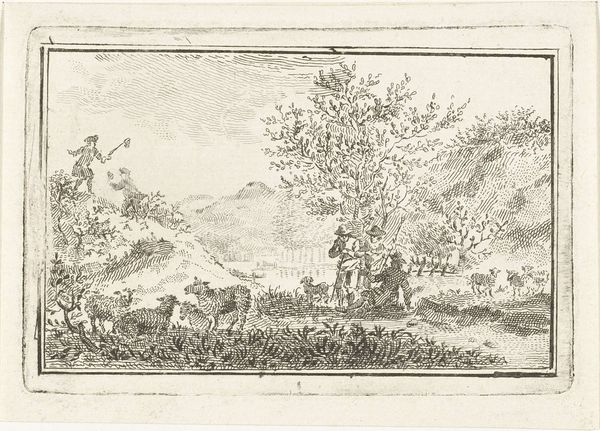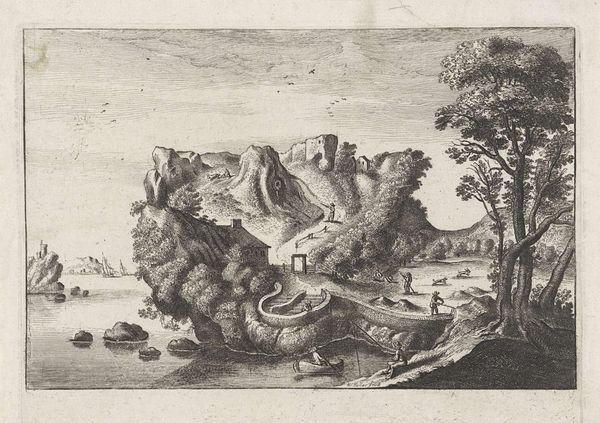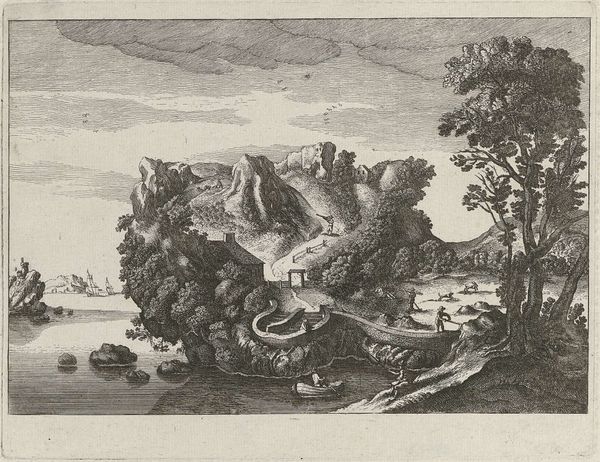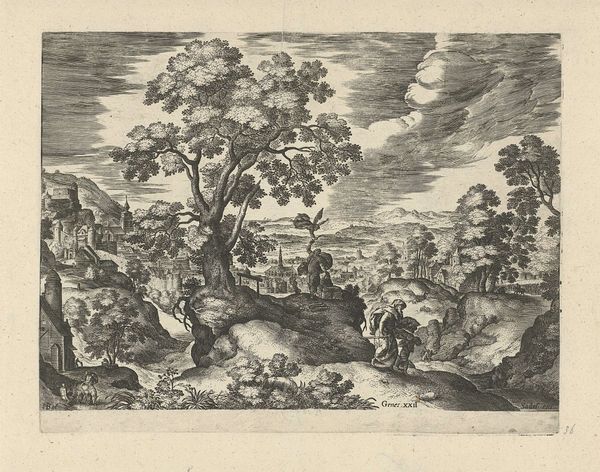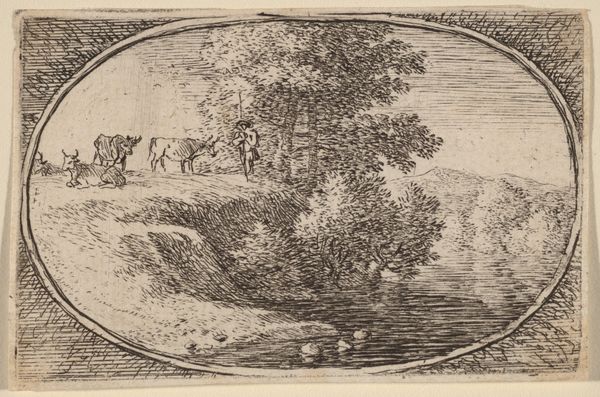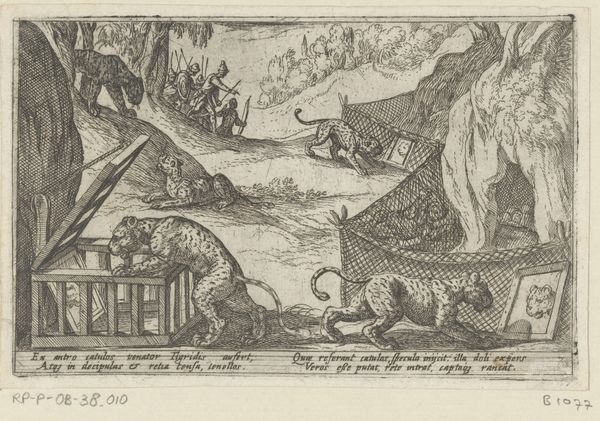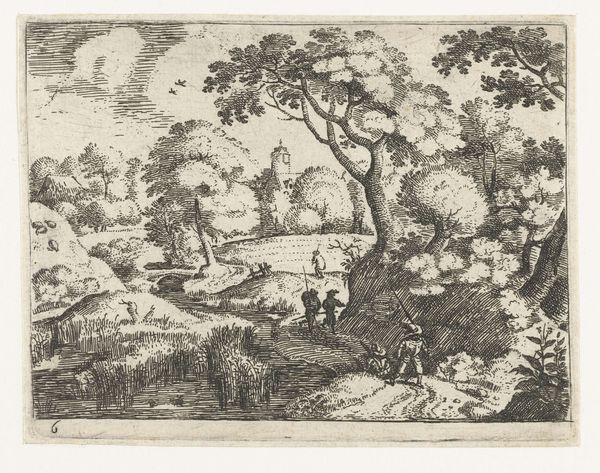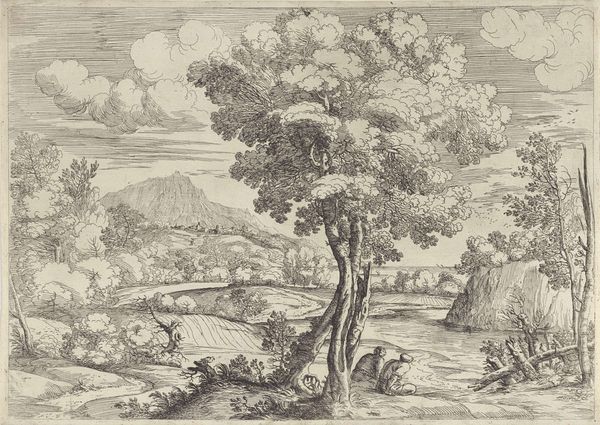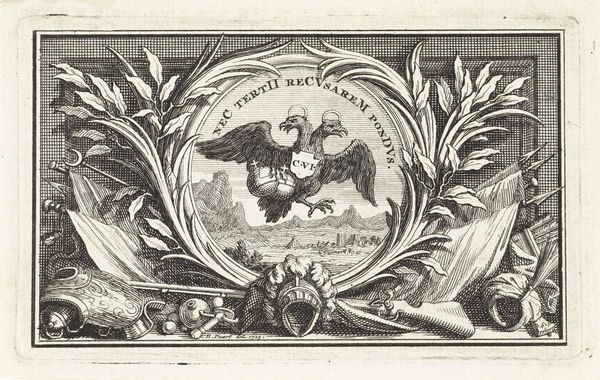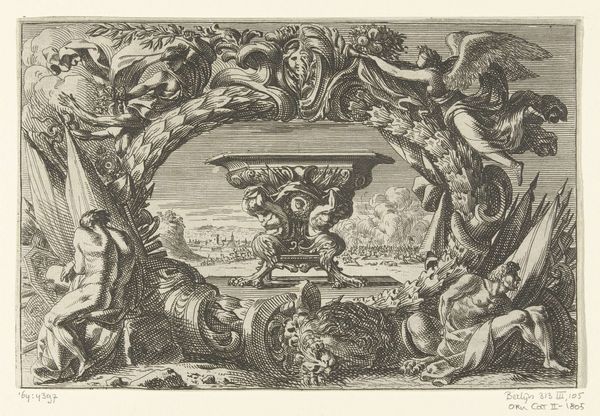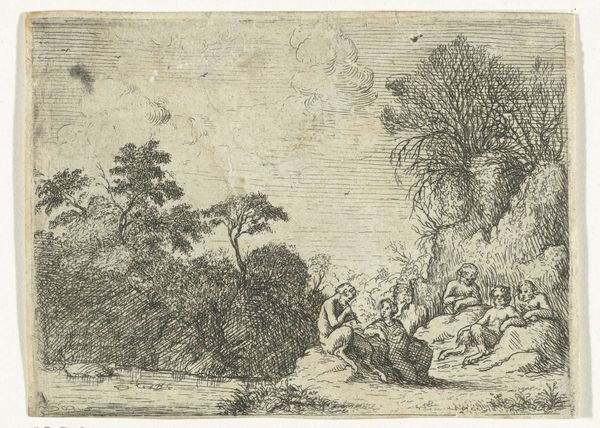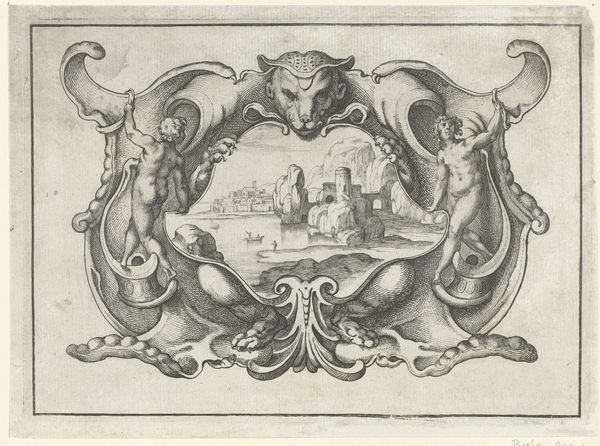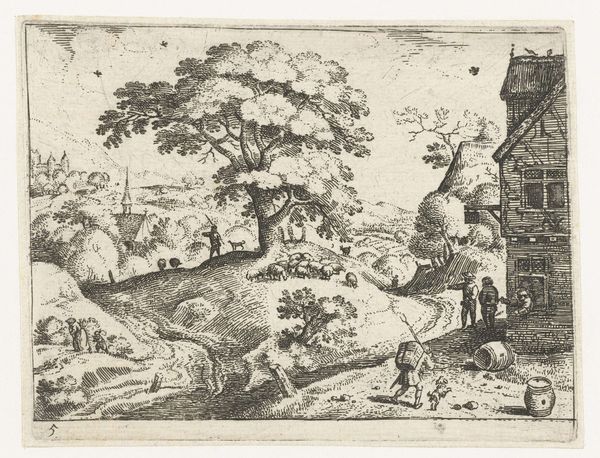
drawing, print, etching, engraving
#
drawing
#
baroque
# print
#
etching
#
landscape
#
form
#
line
#
engraving
#
realism
Dimensions: height 102 mm, width 202 mm
Copyright: Rijks Museum: Open Domain
Editor: We’re looking at "Cartouche met landschap" by Albert Flamen, created sometime between 1648 and 1672. It’s a print, using etching and engraving techniques. The scene is framed by foliage and draped cloth. There’s a landscape in the background and a coat of arms in the foreground, and the whole thing feels meticulously rendered. What strikes you about this piece? Curator: The first thing I notice is how the cartouche, a decorative frame, takes precedence over the landscape itself. It’s a visual power play, dictating how the landscape is viewed and interpreted. The coat of arms also asserts a particular social identity onto this natural scene. Do you think the landscape is secondary to the heraldry? Editor: Absolutely. It feels almost like the landscape is a backdrop, less important than the statement the cartouche is making. Why use a landscape at all if it’s just going to be subservient to the form? Curator: Well, think about the socio-political context. Land ownership, control over natural resources - landscape imagery was often used to legitimize claims to power and territory. The meticulous detail, as you noted, speaks to an effort to survey and visually possess the land. What effect does the somewhat dream-like style in the background have on that claim, though? Editor: That’s an interesting point! The ethereal background creates a sort of disconnect between the ideal and real. So the art piece serves less as documentation of a real scene and more to highlight power relations through symbols that would have meant something specific to the artist's contemporary viewers. Curator: Exactly! It invites us to question the constructed nature of landscape imagery, the politics embedded in its presentation, and the way visual forms reinforce social hierarchies. Editor: I'm understanding better how to decode the artistic choices by investigating social and historical conditions. I didn't initially think about how powerful framing something could be. Curator: These historical insights certainly enrich how we engage with this piece.
Comments
No comments
Be the first to comment and join the conversation on the ultimate creative platform.
